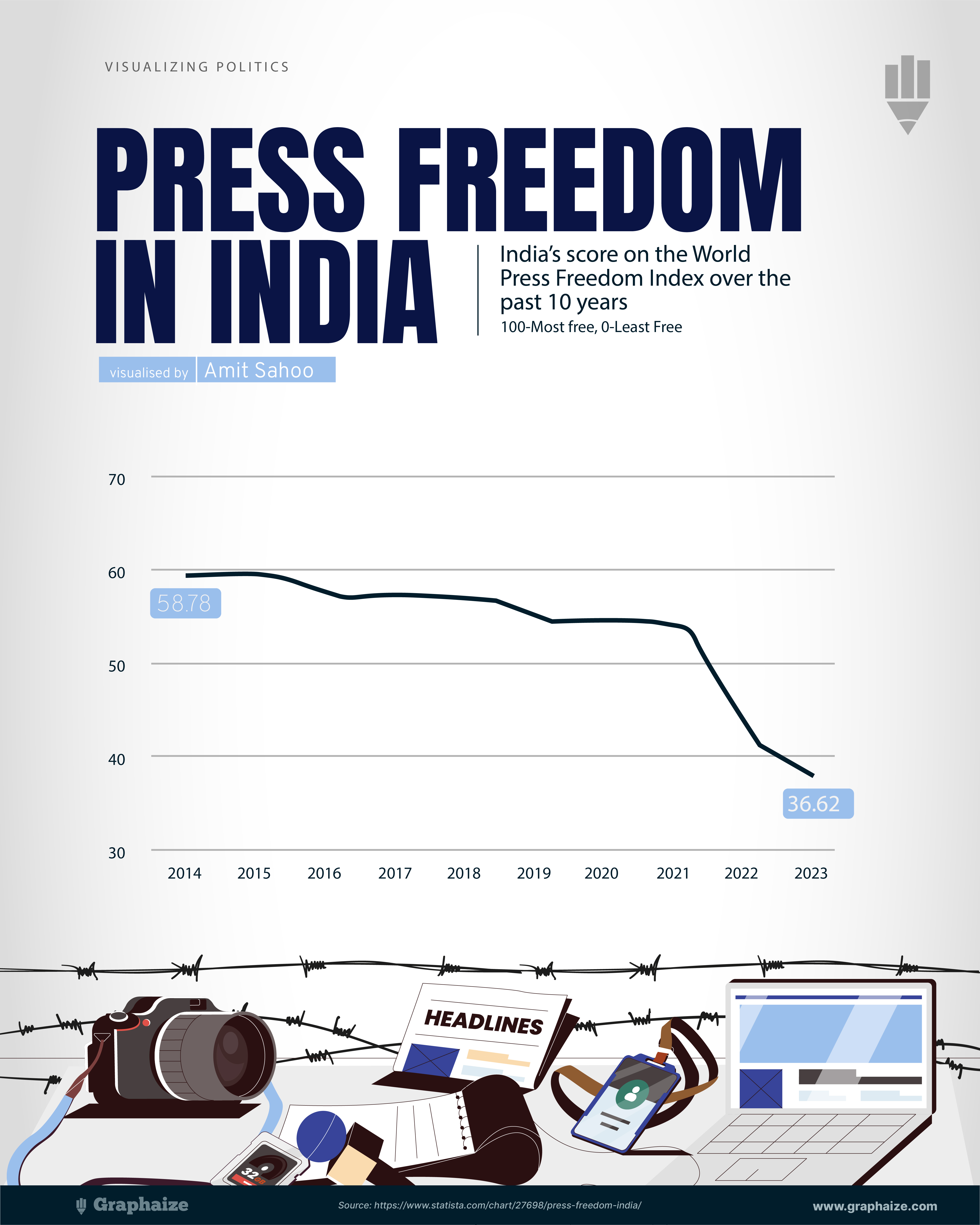
Over the past decade, Press Freedom has seen significant shifts globally. According to recent data, 31% of countries now have a free press, a decline from 41% ten years ago. Meanwhile, journalist incarcerations have doubled, with over 250 reporters behind bars in 2023 alone. These statistics paint a vivid picture of the challenges and progress in the realm of press freedom. This blog post delves into key insights from the last ten years, examining how India scored m on the World Press Freedom Index through the help of pivotal trends, regional disparities, and the impact of digital transformation on media independence. Join us as we explore the dynamic landscape of press freedom and what it means for the future of journalism worldwide.
India boasts one of the world’s largest media landscapes, with over 100,000 newspapers and 380 TV news channels. Despite this vast array of media outlets, the country’s press freedom has seen a significant decline over the past decade. This article explores the factors contributing to this deterioration and examines India’s Press Freedom Index scores from 2014 to 2024.
The Current State of Press Freedom in India
The decline in India’s press freedom is alarming to many observers. The once robust and diverse media environment is increasingly facing challenges such as violence against journalists, media ownership concentration, and political influence. These factors contribute to a media crisis that some argue is stifling free expression and critical journalism.
Violence against journalists in India has escalated, creating a hostile environment for reporters and media professionals. This violence includes physical assaults, threats, and even murder, which significantly hampers journalists’ ability to report freely and independently. The fear of retribution often leads to self-censorship, further eroding press freedom.
The concentration of media ownership is another critical issue affecting press freedom in India. A few large conglomerates control a significant portion of the media, leading to a lack of diverse viewpoints and reducing the independence of news coverage. This consolidation makes it easier for political and corporate interests to influence media narratives.
Political influence on the media is a pervasive problem in India. Many media outlets are aligned with specific political agendas, which compromises their objectivity and impartiality. This alignment often results in biased reporting, where news is skewed to favor particular political interests, undermining the credibility of the media.
Key points of the downward trends
The Press Freedom Index, published by Reporters Without Borders, provides a snapshot of press freedom in countries worldwide. India’s ranking and scores on this index have shown a concerning downward trend over the past decade.
In 2014, India ranked 140th out of 180 countries on the Press Freedom Index, with a score of 40.34. While this ranking was already relatively low, it marked the beginning of a steady decline in press freedom.
By 2023, India’s position had worsened significantly, ranking 161st out of 180 countries with a score of 36.62. This drop reflects the increasing challenges faced by the Indian media, including heightened violence against journalists and greater political influence on media content.
Recent Improvements, but will it continue to be better?
In 2024, India saw a slight improvement, moving up to 159th place with a score of 31.28. However, this minor progress does not overshadow the broader issues that continue to plague press freedom in the country. The slight improvement may indicate some efforts to address these problems, but substantial challenges remain.
Experts say, encouraging media diversity by supporting independent and small media outlets can help reduce the concentration of media ownership. Policies that prevent monopolies and promote competition can ensure a plurality of voices in the media landscape.
Strengthening the independence of media outlets from political influence is vital. This can be achieved through transparent funding mechanisms, editorial independence policies, and regulatory frameworks that protect media freedom. Independent regulatory bodies can oversee media practices and ensure adherence to ethical journalism standards.
Unlock the power of captivating visuals with our seasoned expertise! With 7 years of crafting compelling visual content, we’re ready to elevate your brand’s story. From stunning graphics to mesmerizing animations, we bring your vision to life. Let’s create engaging visuals that resonate with your audience and leave a lasting impression. Partner with us today for an unforgettable visual journey!
